#hoodoo charm
Explore tagged Tumblr posts
Text
Pinecones In Hoodoo + A Pinecone Fertility Charm.
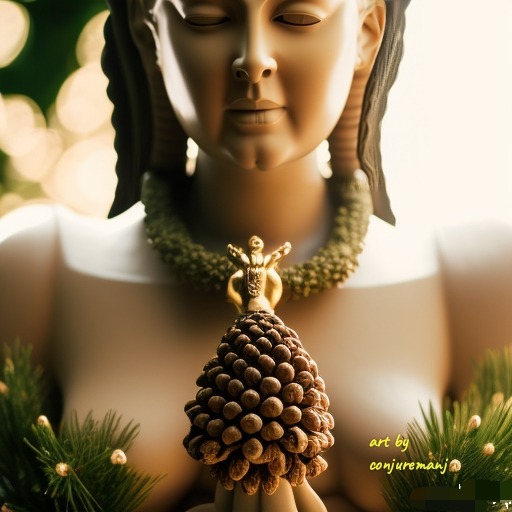
This is a Original piece of digital art by me. A statue of a woman holding a pinecone charm.
First I just wanted to give a little history of pinecones.
Pinecone In History. In Mexico there is a god called “Chicomecoatl” sometimes depicted with an offering of pine cones in one hand, and an evergreen tree in the other. In Hindu their are deities that are often depicted holding a pine cone. The Egyptian Staff of Osiris from (1224 BC) depicts two spiraling snakes rising up to meet at a pine cone. In Ancient Assyrian there is a carvings from (713-716 BC) depicting winged people holding pine cones.
Celts, used pine cones for fertility charm. . Romans used them for the goddess of love Venus. But there are to many others to add to this post.😁
In Rome, the pope wears a pine cone carved into the holy staff that's used in religious ceremonies. There's a huge gargantuan bronze pine cone statue at the Vatican in Rome. 👇
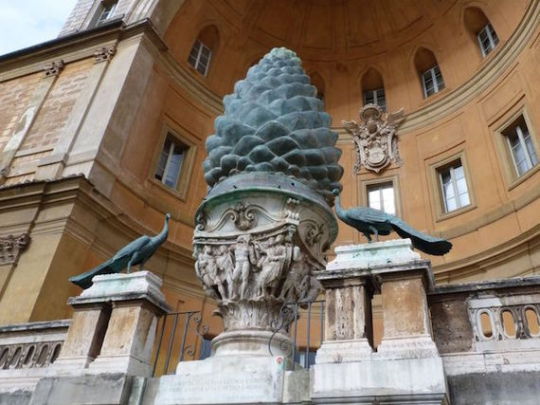
All of these depictions of pine cone are symbols of spiritualty; and let's not forget durning the Winter Solstice (Christmas) people have pinecones on their altars.
Pinecone Purification,Cleansing & Banishing: Burning the tree's pine needles or using pine oil can the strong fresh scent. in the south it's been used to increase your energy when you're feeling stuck in life, it purify the spirit & clear the mine & heal the body.
The energy of Pine smoke can also be used rituals or ceremonies to help release negative energy.
Making Pinecone Incense Sticks: You can easily make your own pine incense stick by tie pine needles. BUT LET the sticks dry for about two weeks before use. (If you can't find pine cones or needles you can buy the Incense or the Pine Oil)

Left Male & Right Female
Now that you have a little idea on pine cones in hoodoo it's one of the most effective charms to used if you are trying to conceive.
How To Tell Which Is Which? To start pinecones comes in male and female. The Male pine cones do not make the hard-shell it is soft and spongy and it's shell closer together. The Female pine cones is the had shell and it's shell is further apart.
Hoodoo Fertility Charm: Get yourself a female pinecone. Drizzle the cone with some Honey.
Next add some hair from the head of the (female) and the (male's) head of the couple who is trying to conceive. Now place the hair in the honey on the pinecone.
Last get a small white plate and a make X in salt from one end to the plate to the other, place the cone in the middle of the plate.
READ PRAYER. Lord, I'm asking you for a child. Your word says you will give us the desires of our hearts (Psalm 37:4), and this is my greatest desire. I want to be a parent. I want to raise a child to love and serve you all of his/her life.
Place the plate under your bed and have sex, more the once if you want.🥰 ❤️ afterwards take that pinecone and bury it in your yard.
#hoodoo magic#like and/or reblog!#spiritual#google search#rootwork#conjuring#southern hoodoo#traditional hoodoo#follow my blog#traditional rootwork#Fertility Charm#Hoodoo charm#Hoodoo fertility#Fertility Magic#ask me questions#ask me anything#Pinecone charm#Pinecone fertility charm#Baby making charm#african spirituality#southern rootwork#rootwork questions
9 notes
·
View notes
Text
I like big books and I cannot lie 🎶




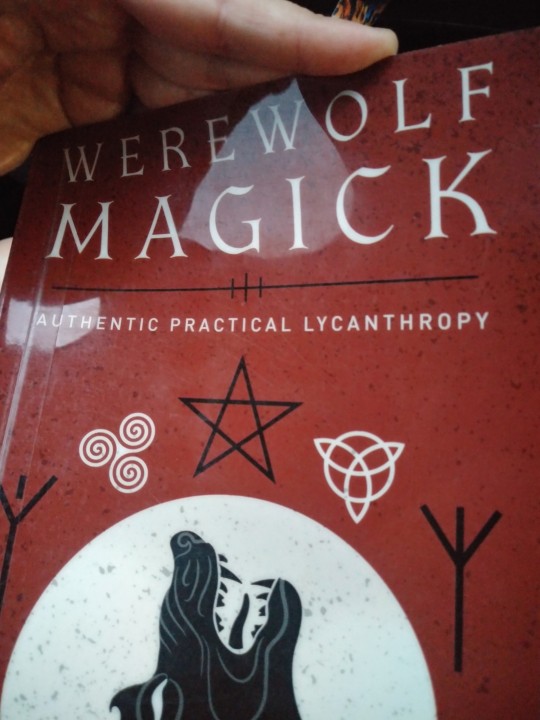
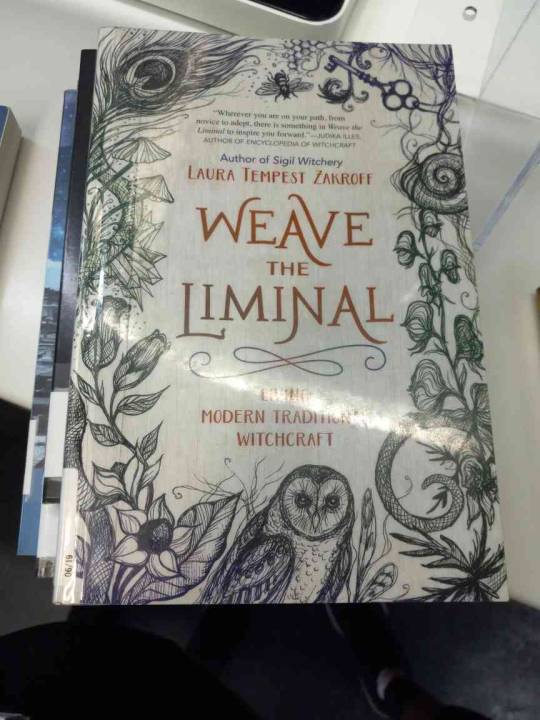

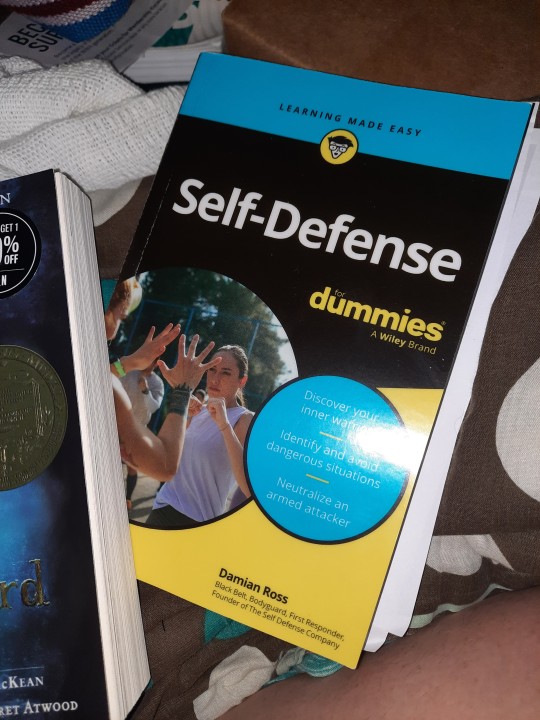
some books I gave recently grabbed from the library.
I liked and wanna buy Do I Have To Wear Black? Lots of good info in there on funerary customs. I wasn't sure I was gonna like it because of the Wicca mentions at first but I was actually pleasantly surprised as I got into it. I sort of blew through it tbh because I'm not super interested in like the Kemetic or Wiccan customs, just the Norse/ heathen and Hellenic, but the very general parts at the beginning were really informative. Mortellus is a mortician and 100% definitely knows what in the heck they're talking about.
I skimmed through the Thrifty Witch book and Tarot Interactions before bringing them back because those I just need to have/ buy. I need to buy those. Thrifty Witch would definitely be more useful to me as a resource than something to read if that makes sense.
and similarly with Tarot Interactions, that is an absolutely fantastic excellent book from what I read of it, and I definitely absolutely need to have that as a resource. I also feel like that's something I wanna take my time with, not rush.
Werewolf Magick was meh. I soared through it. I was rolling my eyes at far too much of it to take any of it seriously, and by the time I got to what I was interested in/ what might have helped, couldn't understand it because of all the weird lingo/ jargon that he'd set up at the beginning. Admittedly that's my own fault obviously for trying to skip to the end, but the first part just made me cringe too much. There's too much mixing of different practices in a way that imo honors none of them, and then mixing it with crap like Wicca to boot. I just... no, I'm good, no thank you. I had gotten it out of curiosity, expecting it to not be much and... yeah, it was what I expected.
Witch Queens, Voodoo Spirits, & Hoodoo has been fantastic so far and I have got to finish it. I started it and got distracted and it went back on the shelf and I've gotta get back into it. It starts with Annie Christmas who is none of the things mentioned on the cover, lol, but I love the way it talks about our local myths and legends. Absolutely A+ 100% yes.
Weave the Liminal is... surprisingly better than I expected so far? I'm not quite sure what to make of it. We'll see as we go.
I've had the ones in that first three pictures checked out for a while and I really need to get to them. I was hoping the Shamanism Bible would give me some words to look up, a good place to start research into that but it feels like too much of a chore. The charm bag and ancestor books I just keep forgetting I have, and I expected the New Orleans one to be a quick read but again keep forgetting it's there.
Did I grab too many books? Yes, every damn time. I have maxed out how many I can borrow from the library. Oooops. xD
I absolutely had to grab The Holy Wild Grimoire though when I saw it on the shelf because that has been on my wishlist for a while and I love checking out books before buying them. I feel much better about purchasing when I already know I like them.
#books & libraries#library#books and reading#pagan witch#witchcraft#witchblr#adhd witch#divination witch#eclectic witch#goddess of witchcraft#neurodivergent witch#oracle witch#hekate#morrigan#voodoo#voodou#new orleans#hoodoo#shamanism#shamanistic#books are magic ✨#amulets & talismans#charm bags#ancestors#ancestor magic#history#research#funerary rights & practices#death dying funerals#paganism
23 notes
·
View notes
Text
UNCROSSING CHARM ✨🖤💫
This is something I like to do every new moon. It is a traditional uncrossing charm that will banish a good deal of low level negative energy sent your way. I’ve found that people can send negative energy out without even realizing it. Most people aren’t really conscious of what’s going on with their internal energy. Emotions and stress—especially irritation, jealousy, or anger—can leak out. This is one of the origins of malochia, or the evil eye. So just because negative energy is coming your way doesn’t mean that you’re under a curse or being attacked on purpose. Sometimes these things just happen as part of one’s day-to-day interactions with people. For this charm, you will need the following ingredients:
l A large grey candle that can be removed from its glass (a “seven-day candle”)
l A nail to carve a sigil into the candle with
l A lancet
l Dragon’s blood powder
Carve this sigil on the candle. (Although it’s better to do it right on the candle, if you are unable to fi nd a removable candle, draw it with a marker on the glass.) You can carve your name and astrological sign on the candle, as well. If you have a personal sigil, as some magicians do, use that instead. Prick your fi nger with the lancet and put a few drops of your own blood in the center of the sigil. Rub the carvings and the wick with dragon’s blood powder. Charge the candle, holding it between your hands and fi lling it with energy. When you feel that the candle can take no more, seal the energy in by tracing the sigil of your choice over it (I was taught to use a pentacle). Now light the candle and allow it to burn down all the way. If the candle is in a glass holder, you can put the whole thing in a metal pot of water when you’re not in the house. That way, if the glass cracks, the water will put out the flame. If you must blow the candle out, just relight it with focused intent at a later time.
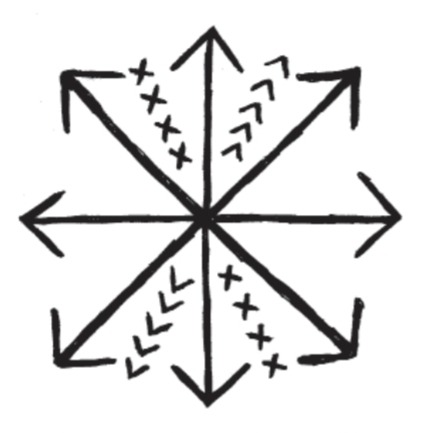
#grimoire#paganism#witchery#witches of tumblr#paganblr#spellcraft#spirit work#traditional witchcraft#witch tips#witches#hoodoo#Uncrossing spell#Uncrossing charm#Protection magick#protection magick#Protection spell
31 notes
·
View notes
Text
Corked Skull Bottle Necklaces

#clay#skull#corked#bottle#necklaces#witchcraft#voodoo#hoodoo#herbs#jewelry#powders#hexes#spells#charms#occult#johnny hellion#witchy#gifts#shopping#for sale
5 notes
·
View notes
Text

Roses Rue Cedar Verbena & Sunflower root 🎁 The Magical Art of Crafting Charm Bags: 100 Mystical Formulas for Success, Love, Wealth, and Wellbeing.
https://a.co/d/iprRr7z
#Wicca #Hoodoo #Voodoo #Folkmagic #Witchcraft #Brujeria #Hexbags #Mojobags #Grigri #Charmbags #Spellbags #Grisgrisbags #Magick #Booksforwitches
#wicca#witchcraft#magick#magic#witches#pagan#wiccan#hoodoo#voodoo#brujeria#charms#charm bags#mojo bags#grigri#Gris gris bags#spell bags#paganism#folk magic#folk witch
3 notes
·
View notes
Text

#hoodoo#voodoo#witchcraft#juju#brujeria#abracadabra#ala kazam#bewitchment#black magic#chant#charm#conjuration#conjuring#possession#worldview
1 note
·
View note
Text
The Ultimate Grimoire Guide
So! I have been seeing a ton of grimoire ideas and thought I’d stuff them all together. A lot of ideas are from @manifestationsofasort, @banebite, and @pigeonflavouredcake. Check them out! They have a ton of cool stuff there.
What Do I Use For My Grimoire?
You can use anything for a grimoire! For a physical one, journals, binders, and notebooks are good. For digital ones, Notion, Tumblr, Docs, and even just your file folder are great.
Introduction
A Book Blessing
Table of Contents
About Me
Your Current Path
Your Personal Beliefs
Your Spiritual Journey
Superstitions
Past lives
Favorite Herbs/Crystals/Animals/Etc.
Natal Chart
Craft Name
How You Entered The Craft
Astrology Signs
Birthday Correspondences (birth tarot card, birth stone, etc.)
Goals
Safety
Fire Safety
What Not to Burn
Toxic Plants & Oils (to humans, plants, animals)
Crystals That Shouldn’t Be Put… (in sun, in water, etc.)
Things That Shouldn’t Be In Nature (glass, salt, etc.)
Potion Safety
How to Incorporate Blood in Spells
Smoke Safety
Wound Care
Biohazards
Core Concepts
Intention & How It Works
Directing Energy
Protection
Banishing
Cleansing
Binding
Charging
Shielding
Grounding
Centering
Visualization
Consecration/Blessing
Warding
Enchanting
Manifestation
Meditation
What Makes A Spell Work
Basic Spell Structure
What Not To Do In Spells
Disposing Spell Ingredients
Revitalizing Long Term Spells
How To Cast Spells
What To Put In Spells
Spell Mediums (jars, spoken, candle, sigils)
Spell Timing
Potion Bases
Differentiating Between Magick and Mundane
Common Terms
Common Symbols
Intuition
Elements
Basic Alchemy and Symbols
Ways To Break Spells
Laws and Philosophies
Correspondences
Herbs & Spices
Crystals & Rocks
Colors
Liquids & Drinks
Metals
Numbers
Tarot Cards
Elements
Trees & Woods
Flowers
Days
Months
Seasons
Moon Phases
Zodiacs
Planets
Incense
Teas
Essential Oils
Directions
Animals
Symbology
Bone Correspondences
Different Types of Water
Common Plants
Entities
Deities You Worship
Pantheons
Pantheons & Deities Closed to You
Common Offerings
Epithets
Mythos
Family
Worship vs Work
Prayers & Prayer Template
Altars
Deity Comms
Devotional Acts
Angels
Demons
Ancestors
Spirit Guides
Fae
Familiars
House, Animal, Plant, Etc. Spirits
Folklore Entities
Spirit Etiquette
Graveyard Etiquette
Boundaries
Communication Guide & Etiquette
Spirit Work Safety Guide
How Entities Appear To You
Circle Casting
Common Offerings
Altars
Servitors
Mythological Creatures (dragons, gorgons, etc.)
Utility Pages
Gazing Pages
Sigil Charging Station
Altar Pages
Intent Pages
Getaway Pages
Vision Boards
Dream Pages
Binding Page
Pendulum Board
Crystal Grid
Throwing Bones Page
Divination Pages
Mirror Gazing Page
Invocation Pages
Affirmation/Manifestation Pages
Spirit Board Page
Other Practices
Practices That Are Closed to You (Voodoo, Hoodoo, Santeria, Brujeria, Shamanism, Native Practices)
Wicca and Wiccan Paths
Satanism, Both Theistic and Non-Theistic
Deity Work
Religious Paths (Hellenism, Christianity, Kemeticism, etc.)
Animism
Types of Magic/Spells
Pop Culture Paganism/Magic
Tech Magic
Chaos Magic
Green Magic
Lunar Magic
Solar Magic
Sea Magic
Kitchen Magic
Ceremonial Magic
Hedge Magic
Death Magic
Gray Magic
Eclectic Magic
Elemental Magic
Fae Magic
Spirit Magic
Candle Magic
Crystal Magic
Herbalism
Glamours
Hexes
Jinxes
Curses
Weather Magic
Astral Magic
Shadow Work
Energy Work
Sigils
Art Magic
Knot Magic
Music Magic
Blood Magic
Bath Magic
Affirmations
Divination
Tarot Cards
Oracle Cards
Playing Cards
Card Spreads
Pendulum
Numerology
Scrying
Palmistry
Tasseography
Runes
Shufflemancy
Dice
Bibliomancy
Carromancy
Pyromancy
Psychic Abilities
Astrology
Auras
Lenormand
Sacred Geometry
Angel Numbers
Ornithomancy
Aeromancy
Aleuromancy
Axinomancy
Belomancy
Hydromancy
Lecanomancy
Necromancy
Oneiromancy
Onomancy
Oomancy
Phyllomancy
Psephomancy
Rhabdomancy
Xylomancy
Tools
Crystal grid
Candle grid
Charms
Talismans
Amulets
Taglocks
Wand
Broom
Athame
Boline
Cingulum
Stang
Bells
Drums
Staffs
Chalices
Cauldrons
Witches Ladder
Poppets
Holidays
Yule
Imbolc
Ostara
Beltane
Litha
Lammas
Mabon
Samhain
Esbats
Deity Specific Holidays
Religious Holidays (Christmas, Easter, Dionysia, etc.)
Celestial Events
Altars
Basics of Altars
Travel Altars
Deity Altars
Spirit Altars
Familiar Altars
Ancestor Altars
Self Altars
Working Altars
Self-Care
Burnout Prevention
Aromatherapy
Stress Management
Coping Mechanisms
Theories & History
Witchcraft history
Paganism
New Age Spirituality
Cultural Appropriation
Thelema
Conspiracy Theories
Cults
Satanic Panic
KJV
Witches in History
Cats in History
Transphobia in Witchcraft Circles
Queerness in Witchcraft Circles
Other
Recipes
How to Get Herbs
Foraging
Drying Herbs and Flowers
Chakras
Reiki
Witches Alphabet
Runic Alphabet
Guide to Gardening
Your Witch Tips
Resources
Other Tips
List of Spells
Cryptids and Their Lore
What is a Liminal Space?
#witch#witchblr#baby witch#witchcraft#witches#kitchen witch#witchcore#witch aesthetic#witchery#witches of tumblr#spoonie witch#beginner witch#witch community#moon witch#green witch#pagan witch#witchy#grimoire#bos#book of shadows#grimoire ideas#book of shadows ideas#bos ideas
6K notes
·
View notes
Text
Things to put in your book of shadows
Of course, only put in your book of shadows/grimoire what you want. If you don't want to put certain subjects in your book then that's fine. It's your book, utilize it how you want. This is just a masterlist of ideas that I've put together. Feel free to add anything else to the list that I may have missed, because there's absolutely no way I included everything.
And for the love of all the gods, if you come across a closed entity or practice, don't try to work with the entity or practice if you're not already part of that group or tradition. You can research it but don't practice it.
+ A blessing and/or protection
+ A table of contents
+ About you:
Your current path
Your personal beliefs
Your spiritual journey
Favorite crystals/herbs/animals
Natal chart
Craft name
How you got into the craft
Astrology signs
Birthday correspondences (birth tarot card, birth stone, etc)
Goals (if you have any)
Anything other relating to your personal practice
+ Safety
Fire safety
What NOT to burn
Plants and oils that can be toxic to your pets
What crystals shouldn't be in water, sunlight, etc
Things that shouldn't be put out in nature (salt, glass, etc)
Potion safety
How to incorporate blood safely
+ Core concepts:
Intention and how it works
Directing energy
Protection
Banishing
Cleansing
Charging
Shielding
Grounding and centering
Visualization
Consencration/Blessing
Warding
Enchanting
Manifestation
+ Correspondence
Personal correspondence
Crystals and rocks
Herbs and spices
Food and drink
Colors
Metals
Number
Tarot card
Elemental (fire, water, air, earth)
Trees and woods
Flowers
Days
Months
Moon phases
Zodiac
Planets
Incense
Teas
Essential oils
Directions (north, south, east, west)
Animals
Local plants, animals, etc
Dream symbology
+ Different practices
Practices that are closed to you (some examples below)
Voodoo and Hoodoo **Closed**
Santeria and Brujeria **Closed**
Shamanism and native american practices **Closed**
Wicca and wiccan paths
Satanism, both theistic and non-theistic paths
+ Different types/practices of magick
Pop culture magick
Technology magick
Chaos magick
Green witchcraft
Lunar magick
Sea witchcraft
Kitchen magick
Ceremonial magick
Hedge witchcraft
Death witchcraft
Grey witchcraft
Eclectic witchcraft
Norse witchcraft
Hellenic witchcraft
Animism
+ Deities
The deity/deities you worship
Different pantheons (the main five are Celtic, Roman, Greek, Egyptian and Norse, all open)
Deities and pantheons that are closed to you
Common offerings
Their epithets
Their mythology
Their family
Deity worship vs deity work
Prayers and how to make your own
Deity communication guide
Devotional acts
Ways to get closer to them
+ Other spiritual entities
Angels
Ancestor work
Spirit guides
The fae
Demons
Familiars
House spirits, animal spirits and plant spirits
Other various folklore entities
Spirit etiquette
Cemetery etiquette
Setting boundaries with the spirits
Communication guide and etiquette
Grounding, banishing, protection and cleansing, aka: "Spirit work safety guide"
How they appear to you
Common offerings
Circle casting
+ Divination
Tarot cards
Oracle cards
Tarot and oracle spreads
Pendulum
Numerology
Scrying
Palmistry/palm reading
Tasseography (Tea leaf reading)
Rune stones
Shufflemancy (Shuffling of a playlist)
Dice divination
Bibliomancy (Randomly picking a phrase from a book)
Carromancy (Melted wax)
Pyromancy (Reading flames)
Psychic abilities
Astrology
Aura reading
Divination via playing cards
Lenormand
Sacred geometry
Angel numbers
+ Other types of magick
Candle magick
Crystal magick
Herbalism/herbal magick
Glamour magick
Hexing
Jinxing
Cursing
Weather magick
Astral work
Shadow work
Energy work
Sigils
Art magick
Knot magick
Crystal grids
Color grids
Music magick
Charms, talismans and amulets
+ Spellwork
What makes a spell work
Basic spell structure
What NOT to do
Disposing of spell ingredients
Revitalizing long term spells
How to cast spells
What to put in spells (See correspondence)
Spell mediums- Jar spells, spoken spells, candle spells, sigils, etc
Spell timing
Setting up a ritual
Taglocks: What they are and how to use them
+ Holidays and Esbats
Yule
Imbolc
Ostara
Beltane
Litha
Lughnasadh/Lammas
Mabon
Samhain
The 12 full moons (Esbats)
How to celebrate
Deity specific holidays
+ Altars and tools
What they are
The different types and their uses (travel altar, working altar, deity altar, ancestor altar, etc)
What you can put on your altar
What you use your altars for
Common tools in witchcraft
How to use the tools
Food and drink
Common herbs in recipes
Sabbat recipes
Moon water: What it is and how to use it
Potion bases
Tea magick
How to get your herbs
Foraging
+ Mental health and self care
Bath magick
Affirmations
Burnout prevention
Aromatherapy
Stress management
Mental health coping mechanisms
+ History of witchcraft
+ Dream records
+ How to differentiate between the magickal and the mundane
+ Calendar of celestial events (Esbats, retrogrades, etc)
+ How to dry herbs and flowers
+ What chakras actually are and how they work within Hinduism
+ History and traditional uses of reiki
+ The witches' alphabet
+ The runic alphabet
+ Common witchcraft terms
+ Common symbols in witchcraft
+ Your own witch tips
+ Good witchcraft books and authors to avoid
+ Any online resources you utilize often
#book of shadows#grimoire prompts#grimoire#book of shadows prompts#witchcraft#witchblr#witch community#witchcraft masterpost#long post#witchcraft 101#witches of tumblr#beginner witch#baby witch#witch#paganism#pagan#wicca#pagan witch#spirituality#witch tips#witch tag#closet witch#resources
7K notes
·
View notes
Text
Reading list for Afro-Herbalism:
A Healing Grove: African Tree Remedies and Rituals for the Body and Spirit by Stephanie Rose Bird
Affrilachia: Poems by Frank X Walker
African American Medicine in Washington, D.C.: Healing the Capital During the Civil War Era by Heather Butts
African American Midwifery in the South: Dialogues of Birth, Race, and Memory by Gertrude Jacinta Fraser
African American Slave Medicine: Herbal and Non-Herbal Treatments by Herbert Covey
African Ethnobotany in the Americas edited by Robert Voeks and John Rashford
Africanisms in the Gullah Dialect by Lorenzo Dow Turner
Africans and Native Americans: The Language of Race and the Evolution of Red-Black Peoples by Jack Forbes
African Medicine: A Complete Guide to Yoruba Healing Science and African Herbal Remedies by Dr. Tariq M. Sawandi, PhD
Afro-Vegan: Farm-Fresh, African, Caribbean, and Southern Flavors Remixed by Bryant Terry
Barracoon: The Story of the Last “Black Cargo” by Zora Neale Hurston
Big Mama’s Back in the Kitchen by Charlene Johnson
Big Mama’s Old Black Pot by Ethel Dixon
Black Belief: Folk Beliefs of Blacks in America and West Africa by Henry H. Mitchell
Black Diamonds, Vol. 1 No. 1 and Vol. 1 Nos. 2–3 edited by Edward J. Cabbell
Black Faces, White Spaces: Reimagining the Relationship of African Americans to the Great Outdoors by Carolyn Finney
Black Food Geographies: Race, Self-Reliance, and Food Access in Washington, D.C. by Ashanté M. Reese
Black Indian Slave Narratives edited by Patrick Minges
Black Magic: Religion and the African American Conjuring Tradition by Yvonne P. Chireau
Black Nature: Four Centuries of African American Nature Poetry edited by Camille T. Dungy
Blacks in Appalachia edited by William Turner and Edward J. Cabbell
Caribbean Vegan: Meat-Free, Egg-Free, Dairy-Free Authentic Island Cuisine for Every Occasion by Taymer Mason
Dreams of Africa in Alabama: The Slave Ship Clotilda and the Story of the Last Africans Brought to America by Sylviane Diouf
Faith, Health, and Healing in African American Life by Emilie Townes and Stephanie Y. Mitchem
Farming While Black: Soul Fire Farm’s Practical Guide to Liberation on the Land by Leah Penniman
Folk Wisdom and Mother Wit: John Lee – An African American Herbal Healer by John Lee and Arvilla Payne-Jackson
Four Seasons of Mojo: An Herbal Guide to Natural Living by Stephanie Rose Bird
Freedom Farmers: Agricultural Resistance and the Black Freedom Movement by Monica White
Fruits of the Harvest: Recipes to Celebrate Kwanzaa and Other Holidays by Eric Copage
George Washington Carver by Tonya Bolden
George Washington Carver: In His Own Words edited by Gary Kremer
God, Dr. Buzzard, and the Bolito Man: A Saltwater Geechee Talks About Life on Sapelo Island, Georgia by Cornelia Bailey
Gone Home: Race and Roots through Appalachia by Karida Brown
Ethno-Botany of the Black Americans by William Ed Grime
Gullah Cuisine: By Land and by Sea by Charlotte Jenkins and William Baldwin
Gullah Culture in America by Emory Shaw Campbell and Wilbur Cross
Gullah/Geechee: Africa’s Seeds in the Winds of the Diaspora-St. Helena’s Serenity by Queen Quet Marquetta Goodwine
High on the Hog: A Culinary Journey from Africa to America by Jessica Harris and Maya Angelou
Homecoming: The Story of African-American Farmers by Charlene Gilbert
Hoodoo Medicine: Gullah Herbal Remedies by Faith Mitchell
Jambalaya: The Natural Woman’s Book of Personal Charms and Practical Rituals by Luisah Teish
Just Medicine: A Cure for Racial Inequality in American Health Care by Dayna Bowen Matthew
Leaves of Green: A Handbook of Herbal Remedies by Maude E. Scott
Like a Weaving: References and Resources on Black Appalachians by Edward J. Cabbell
Listen to Me Good: The Story of an Alabama Midwife by Margaret Charles Smith and Linda Janet Holmes
Making Gullah: A History of Sapelo Islanders, Race, and the American Imagination by Melissa Cooper
Mandy’s Favorite Louisiana Recipes by Natalie V. Scott
Medical Apartheid: The Dark History of Medical Experimentation on Black Americans from Colonial Times to the Present by Harriet Washington
Mojo Workin’: The Old African American Hoodoo System by Katrina Hazzard-Donald
Motherwit: An Alabama Midwife’s Story by Onnie Lee Logan as told to Katherine Clark
My Bag Was Always Packed: The Life and Times of a Virginia Midwife by Claudine Curry Smith and Mildred Hopkins Baker Roberson
My Face Is Black Is True: Callie House and the Struggle for Ex-Slave Reparations by Mary Frances Berry
My Grandmother's Hands: Racialized Trauma and the Pathway to Mending Our Hearts and Bodies by Resmaa Menakem
On Her Own Ground: The Life and Times of Madam C.J. Walker by A'Lelia Bundles
Papa Jim’s Herbal Magic Workbook by Papa Jim
Places for the Spirit: Traditional African American Gardens by Vaughn Sills (Photographer), Hilton Als (Foreword), Lowry Pei (Introduction)
Post Traumatic Slave Syndrome by Dr. Joy DeGruy
Rooted in the Earth: Reclaiming the African American Environmental Heritage by Diane Glave
Rufus Estes’ Good Things to Eat: The First Cookbook by an African-American Chef by Rufus Estes
Secret Doctors: Ethnomedicine of African Americans by Wonda Fontenot
Sex, Sickness, and Slavery: Illness in the Antebellum South by Marli Weiner with Mayzie Hough
Slavery’s Exiles: The Story of the American Maroons by Sylviane Diouf
Soul Food: The Surprising Story of an American Cuisine, One Plate at a Time by Adrian Miller
Spirituality and the Black Helping Tradition in Social Work by Elmer P. Martin Jr. and Joanne Mitchell Martin
Sticks, Stones, Roots & Bones: Hoodoo, Mojo & Conjuring with Herbs by Stephanie Rose Bird
The African-American Heritage Cookbook: Traditional Recipes and Fond Remembrances from Alabama’s Renowned Tuskegee Institute by Carolyn Quick Tillery
The Black Family Reunion Cookbook (Recipes and Food Memories from the National Council of Negro Women) edited by Libby Clark
The Conjure Woman and Other Conjure Tales by Charles Chesnutt
The Home Place: Memoirs of a Colored Man’s Love Affair with Nature by J. Drew Lanham
The Jemima Code: Two Centuries of African American Cookbooks by Toni Tipton-Martin
The President’s Kitchen Cabinet: The Story of the African Americans Who Have Fed Our First Families, from the Washingtons to the Obamas by Adrian Miller
The Taste of Country Cooking: The 30th Anniversary Edition of a Great Classic Southern Cookbook by Edna Lewis
The Tuskegee Syphilis Study: An Insiders’ Account of the Shocking Medical Experiment Conducted by Government Doctors Against African American Men by Fred D. Gray
Trace: Memory, History, Race, and the American Landscape by Lauret E. Savoy
Vegan Soul Kitchen: Fresh, Healthy, and Creative African-American Cuisine by Bryant Terry
Vibration Cooking: Or, The Travel Notes of a Geechee Girl by Vertamae Smart-Grosvenor
Voodoo and Hoodoo: The Craft as Revealed by Traditional Practitioners by Jim Haskins
When Roots Die: Endangered Traditions on the Sea Islands by Patricia Jones-Jackson
Working Conjure: A Guide to Hoodoo Folk Magic by Hoodoo Sen Moise
Working the Roots: Over 400 Years of Traditional African American Healing by Michelle Lee
Wurkn Dem Rootz: Ancestral Hoodoo by Medicine Man
Zora Neale Hurston: Folklore, Memoirs, and Other Writings: Mules and Men, Tell My Horse, Dust Tracks on a Road, Selected Articles by Zora Neale Hurston
The Ways of Herbalism in the African World with Olatokunboh Obasi MSc, RH (webinar via The American Herbalists Guild)
2K notes
·
View notes
Text
Hoodoo, Rootwork and Conjure sources by Black Authors
Because you should only ever be learning your ancestral ways from kinfolk. Here's a compilation of some books, videos and podcast episodes I recommend reading and listening to, on customs, traditions, folk tales, songs, spirits and history. As always, use your own critical thinking and spiritual discernment when approaching these sources as with any others.

Hoodoo in America by Zora Neale Hurston (1931)
Mules and Men by Zora Neale Hurston (1936)
Tell my horse by Zora Neale Hurston (1938)
Let Nobody Turn Us Around: An African American Anthology by Manning Marable and Leith Mullings, editors (2003)
Black Magic: Religion and the African American Conjuring Tradition by Yvonne P. Chireau (2006)
African American Folk Healing by Stephanie Mitchem (2007)
Hoodoo Medicine: Gullah Herbal Remedies by Faith Mitchell (2011)
Mojo Workin': The Old African American Hoodoo System by Katrina Hazzard-Donald (2012)
Rootwork: Using the Folk Magick of Black America for Love, Money and Success by Tayannah Lee McQuillar (2012)
Talking to the Dead: Religion, Music, and Lived Memory among Gullah/Geechee Women by LeRhonda S. Manigault-Bryant (2014)
Working the Roots: Over 400 Years Of Traditional African American Healing by Michele Elizabeth Lee (2017)
Barracoon: The Story of the Last "Black Cargo" by Zora Neale Hurston (2018)
Jambalaya: The Natural Woman's Book of Personal Charms and Practical Rituals by Luisa Teish (2021)
African American Herbalism: A Practical Guide to Healing Plants and Folk Traditions by Lucretia VanDyke (2022)
youtube
youtube
youtube
youtube
These are just some suggestions but there's many many more!! This is by no means a complete list.
I recommend to avoid authors who downplay the importance of black history or straight out deny how blackness is central to hoodoo. The magic, power and ashé is in the culture and bloodline. You can't separate it from the people. I also recommend avoiding or at the very least taking with a huge grain of salt authors with ties to known appropriators and marketeers, and anyone who propagates revisionist history or rather denies historical facts and spreads harmful conspiracy theories. Sadly, that includes some black authors, particularly those who learnt from, and even praise, white appropriators undermining hoodoo and other african and african diasporic traditions. Be careful who you get your information from. Keeping things traditional means honoring real history and truth.
Let me also give you a last but very important reminder: the best teachings you'll ever get are going to come from the mouths of your own blood. Not a book or anything on the internet. They may choose to put certain people and things in your path to help you or point you in the right direction, but each lineage is different and you have to honor your own. Talk to your family members, to the Elders in your community, learn your genealogy, divine before moving forwards, talk to your dead, acknowledge your people and they'll acknowledge you and guide you to where you need to be.
May this be of service and may your ancestors and spirits bless you and yours 🕯️💀
#hoodoo#conjure#rootwork#black hoodoo authors#Youtube#hoodoo books#african american conjure#african american history#black history#black folklore#african american folklore#black magic#african american magic#witches of color#ATRs#Spotify
1K notes
·
View notes
Text
Part 1. Charms / Jujus Used in Real Hoodoo.
In traditional hoodoo we don't have amulets, but we do have a few charms here are some that are traditional

Mojo Wish Beans also called African Wishing Beans is believed to possess the power to make your wishes come true. In some beliefs they are distributed for luck or carried in a flannel bag to obtain desires.

Buckeye Nut. Gets rid of and turns back all evil, jinxes, or curses placed on you by the devil or your enemies. Brings good luck to you!
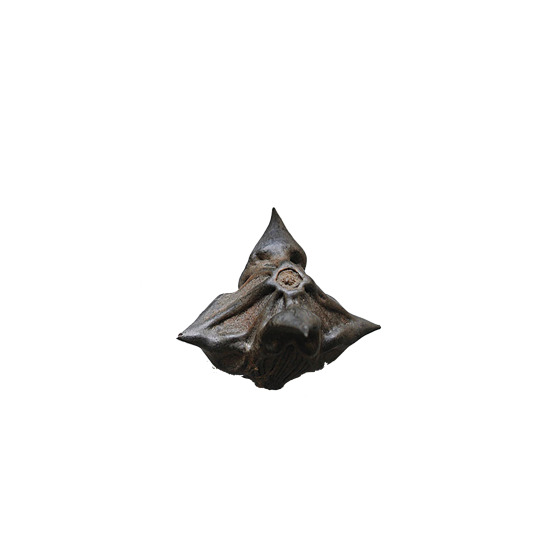
DEVIL POD
This curio is often used for protection both in the home and on your person in a mojo bag.
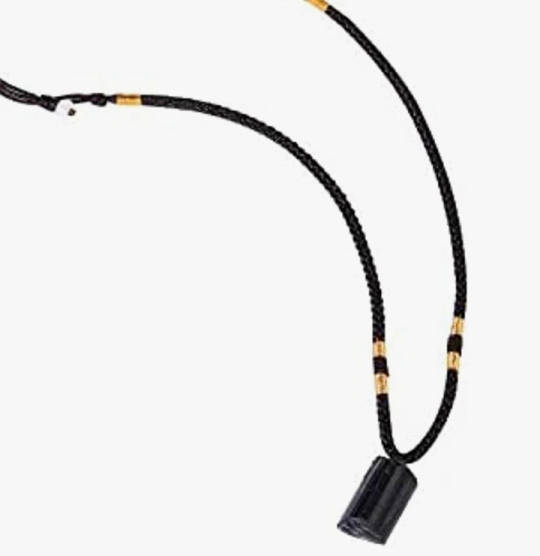
A Jet Stone has long been carried in real traditional root workers in hoodoo to keep away negative spirits, energy, and vibrations. This is not a crystal but more like petrified cold.

Black Tourmaline. Known as a grounding stone, is believed to foster a connection between the Earth and the human spirit, aiding in the removal of negative energies within a person or a space. Helps with your work.
#Hoodoo charms#like and/or reblog!#spiritual#rootwork#conjuring#traditional hoodoo#southern hoodoo#follow my blog#hoodoo#Charms
112 notes
·
View notes
Text

Simbi water spirits are revered in Hoodoo originating from Central African spiritual practices. When Africans were enslaved in the United States, they blended African spiritual beliefs with Christian baptismal practices. Enslaved African Americans prayed to Simbi water spirits during their baptismal services. In 1998, in a historic house in Annapolis, Maryland called the Brice House archaeologists unearthed Hoodoo artifacts inside the house that linked to the Kongo people. These artifacts are the continued practice of the Kongo's minkisi and nkisi culture in the United States brought over by enslaved Africans. For example, archeologists found artifacts used by enslaved African Americans to control spirits by housing spirits inside caches or nkisi bundles. These spirits inside objects were placed in secret locations to protect an area or bring harm to slaveholders. "In their physical manifestations, minkisi (nkisi) are sacred objects that embody spiritual beings and generally take the form of a container such as a gourd, pot, bag, or snail shell. Medicines that provide the minkisi with power, such as chalk, nuts, plants, soil, stones, and charcoal, are placed in the container." Nkisi bundles were found in other plantations in Virginia and Maryland. For example, nkisi bundles were found for the purpose of healing or misfortune. Archeologists found objects believed by the enslaved African American population in Virginia and Maryland to have spiritual power, such as coins, crystals, roots, fingernail clippings, crab claws, beads, iron, bones, and other items assembled together inside a bundle to conjure a specific result for either protection or healing. These items were hidden inside slaves' dwellings. These practices were concealed from slaveholders.

In Darrow, Louisiana at the Ashland-Belle Helene Plantation historians and archeologists unearthed Kongo and Central African practices inside slave cabins. Enslaved Africans in Louisiana conjured the spirits of Kongo ancestors and water spirits by using seashells. Other charms were found in several slave cabins, such as silver coins, beads, polished stones, bones, and were made into necklaces or worn in their pockets for protection. These artifacts provided examples of African rituals at Ashland Plantation. Slaveholders tried to stop African practices among their slaves, but enslaved African Americans disguised their rituals by using American materials and applying an African interpretation to them and hiding the charms in their pockets and making them into necklaces concealing these practices from their slaveholders. In Talbot County, Maryland at the Wye House plantation where Frederick Douglass was enslaved in his youth, Kongo related artifacts were found. Enslaved African Americans created items to ward off evil spirits by creating a Hoodoo bundle near the entrances to chimneys which was believed to be where spirits enter. The Hoodoo bundle contained pieces of iron and a horse shoe. Enslaved African Americans put eyelets on shoes and boots to trap spirits. Archaeologists also found small carved wooden faces. The wooden carvings had two faces carved into them on both sides which were interpreted to mean an African American conjurer who was a two-headed doctor. Two-headed doctors in Hoodoo means a conjurer who can see into the future and has knowledge about spirits and things unknown.

At Levi Jordan Plantation in Brazoria, Texas near the Gulf Coast, researchers suggests the plantation owner Levi Jordan may have transported captive Africans from Cuba back to his plantation in Texas. These captive Africans practiced a Bantu-Kongo religion in Cuba, and researchers excavated Kongo related artifacts at the site. For example, archeologists found in one of the cabins called the "curer's cabin" remains of an nkisi nkondi with iron wedges driven into the figure to activate its spirit. Researchers found a Kongo bilongo which enslaved African Americans created using materials from white porcelain creating a doll figure. In the western section of the cabin they found iron kettles and iron chain fragments. Researchers suggests the western section of the cabin was an altar to the Kongo spirit Zarabanda
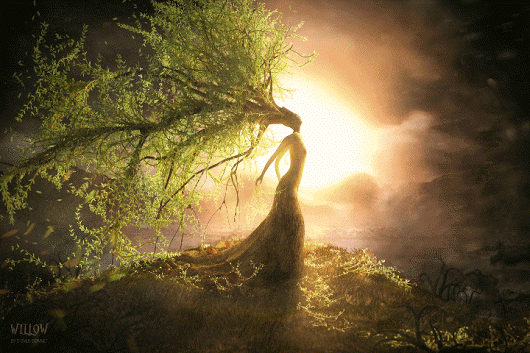
#zarabanda#bilongo#nkisi nkondi#bantu kongo#cuba#texas#levi jordan#african#afrakan#kemetic dreams#africans#african culture#afrakan spirituality#afrakans#frederick douglass#Ashland-Belle Helene Plantation#Darrow#Louisiana#simbi#water#water spirit#baptism#christianity#christian broadcasting network#christian living#christian doctrine#christian faith#hoodoo#vodun#voodoo
281 notes
·
View notes
Text
In the prologue to Spectral Evidence, Pulitzer winner Gregory Pardlo’s new collection, he writes, “This book is about the legal means by which fear is used to rationalize the persecution of people imagined to be in league with the possessed of supernatural forces. This book argues that the logic used to rationalize the prosecution of witches is the same logic that rationalizes vigilantism and police street justice.” He goes on to consider that both Black men and white women are “similarly pressed into service as both muse and monster in the Western cultural imagination,” while, at their ghostly intersection, the patriarchy is haunted by “the omnipresent but rarely named” Black woman.
One iconic example, brought forth in these shimmering poems of the self as shaped by (and shaping) American history, is Tituba, the only woman of color to be accused in the Salem witch trials.
Occult
Zero your scales to the burden of a lash, Dear Justice, but let Tituba clumsy the Magistrates’ minds with a wag of her wizened index. A flight risk near forests of the Wampanoag where Christians savaged Queen Weetamoo’s corpse, what else might Tituba, nonwhite and woman, haunt but a margin of error? She’s a catbird’s song trapped in the chimney. She’s egg whites in water, she is the tumescence of smoke. Dear Mami Wata, let Tituba prove to be the stone that splits the stream of their vision. Let her renounce sight and be unseen. Let her cough ground coral in the shedding of a pewter moon, that she, of all the innocents, should live. Dear Three-headed Hecate, replace her, the unthought thought, with wax, twigs, horse hair and straw. Let her not appear as a witness. Nor as evidence. As with the talking dog, let her be the hoodoo that speaks through their mirrors. Let a hang-thread skein of yarn ghost the floorboards tempting a red cat—his familiars, the devil and his counsel, the canary. Let her conjure the man in black they fear who charms pilgrims on the road to paradise, disguised as a harmless birdwatcher. Dear Nemesis, let her feed the court a few names from his register—a taste of her truth, her mise en abyme, her one hell that calls forth another. With no standing on her own behalf, let her sit in judgment. Let this power invested of gavel and oath help her give birth through her mouth like a god.
More on this book and author:
Learn more about Spectral Evidence by Gregory Pardlo.
Browse other books by Gregory Pardlo and follow him on Twitter @pardlo.
Click here for a special NYPL recording of Imani Perry and Gregory Pardlo in conversation about Spectral Evidence.
Visit our Tumblr to peruse poems, audio recordings, and broadsides in the Knopf poem-a-day series.
To share the poem-a-day experience with friends, pass along this link.
#poetry#knopf#poem-a-day#knopf poetry#national poetry month#poetry month#knopfpoetry#poem#Pardloaudio#Gregory Pardlo#spectral evidence#occult
56 notes
·
View notes
Text
Sources on Louisiana Voodoo

door in New Orleans by Jean-Marcel St. Jacques
For better or worse, (almost always downright wrong,) Louisiana Voodoo and Hoodoo are likely to come up in any depiction of the state of Louisiana. I’ve created a list of works on contemporary and historical Voodoo/Hoodoo for anyone who’d like to learn more about what this tradition is and is not (hint: it developed separately from Haitian Vodou which is its own thing) or would like to depict it in a non-stereotypical way. I’ve listed them in chronological order. Please keep a few things in mind. Almost all sources presented unfortunately have their biases. As ethnographies Hurston’s work no longer represent best practices in Anthropology, and has been suspected of embellishment and sensationalism on this topic. Additionally, the portrayal is of the religion as it was nearly 100 years ago- all traditions change over time. Likewise, Teish is extremely valuable for providing an inside view into the practice, but certain views, as on Ancient Egypt, may be offensive now. I have chosen to include the non-academic works by Alvarado and Filan for the research on historical Voodoo they did with regards to the Federal Writer’s Project that is not readily accessible, HOWEVER, this is NOT a guide to teach you to practice this closed tradition, and again some of the opinions are suspect- DO NOT use sage, which is part of Native practice and destroys local environments. I do not support every view expressed, but think even when wrong these sources present something to be learned about the way we treat culture.
*Start with Osbey, the shortest of the works. The works in bold are those I consider the best- many are primary sources. To compare Louisiana Voodoo with other traditions see the chapter on Haitian Vodou in Creole Religions of the Caribbean by Olmos and Paravinsi-Gebert. Additionally many songs and chants were originally in Louisiana Creole (different from the Louisiana French dialect), which is now severely endangered. You can study the language in Ti Liv Kreyol by Guillery-Chatman et. Al.
Le Petit Albert by Albertus Parvus Lucius (1706) grimoire widely circulated in France in the 18th century, brought to the colony & significantly impacted Hoodoo
Mules and Men by Zora Neale Hurston (1935)
Spirit World-Photographs & Journal: Pattern in the Expressive Folk Culture of Afro-American New Orleans by Michael P. Smith (1984)
Jambalaya: The Natural Woman's Book of Personal Charms and Practical Rituals by Luisah Teish (1985)
Eve’s Bayou (1997), film
Spiritual Merchants: Religion, Magic, and Commerce by Carolyn Morrow Long (2001)
A New Orleans Voodoo Priestess: The Legend and Reality of Marie Laveau by Carolyn Morrow Long (2006)
“Yoruba Influences on Haitian Vodou and New Orleans Voodoo” by Ina J. Fandrich (2007)
The New Orleans Voodoo Handbook by Kenaz Filan (2011)
“Why We Can’t Talk To You About Voodoo” by Brenda Marie Osbey (2011)
Mojo Workin': The Old African American Hoodoo System by Katrina Hazzard-Donald (2013)
The Tomb of Marie Laveau In St. Louis Cemetery No. 1 by Carolyn Morrow Long (2016)
Lemonade, visual album by Beyonce (2016)
How to Make Lemonade, book by Beyonce (2016)
“Work the Root: Black Feminism, Hoodoo Love Rituals, and Practices of Freedom” by Lyndsey Stewart (2017)
The Lemonade Reader edited by Kinitra D. Brooks and Kameelah L. Martin (2019)
The Magic of Marie Laveau by Denise Alvarado (2020)
In Our Mother’s Gardens (2021), documentary on Netflix, around 1 hour mark traditional offering to the ancestors by Dr. Zauditu-Selassie
“Playing the Bamboula” rhythm for honoring ancestors associated with historical Voodoo
Voodoo and Power: The Politics of Religion in New Orleans 1880-1940 by Kodi A. Roberts (2023)
The Marie Laveau Grimoire by Denise Alvarado (2024)
Voodoo: An African American Religion by Jeffrey E. Anderson (2024)
#I’ll continue to update as I find more sources#Please be respectful of other people’s religion#Louisiana Voodoo#Louisiana Hoodoo#In the case of authors behind a paywall or whom you do not wish to support I highly recommend your local library#Voodoo#Hoodoo#conjure#rootwork#Books#some consider voodoo/hoodoo diff today but this may not always have been the case historically so they have been presented together here
61 notes
·
View notes
Text
I made a love potion.

Always wanted to whip up a love potion? Try this recipe for attraction oil to draw a little fresh amour into your life.
Using ingredients chosen for their sacredness to feminine charm and magnetism, this love potion makes a lovely project for beginning a new chapter in your romantic life.
So, if you want to experiment with a little love magic, get out your herbs, oil, and at least one pretty little bottle to pour it into.
What is this love potion for?
Contrary to the the glamorized portrayals of love potions in Hollywood that bewitch an unwilling lover to become hopelessly (and sometimes dangerously) infatuated with the spell caster, this recipe is used in more passive magic as a tool for attraction.
But passive doesn’t mean powerless.
Sometimes called 'Come to Me Oil' in the Hoodoo tradition, this attraction oil presumably bestows the caster with a kind of imperceptible glow or charisma that makes her irresistibly charming.
Of course, it isn’t an exact science, and, as always, I encourage you to experiment.
But the only way to know if it works for you is to try it.
Warning: Do not, under any circumstances, ingest these oils. Hopefully this is obvious. But you know, there’s always that one person. Also, be mindful of allergies, and always do a patch test before adding to bathwater or applying generously to skin.
Ecstasy elixir
The flaming spiciness of the ingredients in this love potion are known for their metaphysical associations with lust, passion, and sexual magnetism. Try this one to attract the kind of energy that sparks a sensual and passionate love.
Ingredients you'll need for ecstasy elixir
1-2 ounces carrier oil (jojoba, olive oil, etc.)
15 drops cedarwood essential oil
8 drops ginger essential oil
3 drops cinnamon essential oil
Step 1
Using a perfume funnel (if necessary), begin by pouring the carrier oil into the bottle, making sure there is plenty of room at the top of the bottle for the additional oils.
Step 2
Add remaining oils in any order. Gently shake to blend the oil.
Step 3
Leave the bottle on a windowsill to charge in the full moonlight.
Step 4
Add this oil to an attraction bath or blend it with an organic, unscented body lotion like this one.
#love potion#love magic#white magic#potion photography#potion recipe#witchcraft#witch community#witchblr#witches of Tumblr
21 notes
·
View notes
Text

“Charm bags rank among the most popular amulets in the world today and yet up until now there has been precious little accessible, practical information about how to make them. Elhoim Leafar remedies that situation with his comprehensive book The Magical Art of Crafting Charm Bags. Elhoim leads the reader through all stages of creating these powerful magical tools, as well as enumerating and describing their various components, ranging from crystals and perfumes, to bones and herbs. This book will be a welcome and useful addition to any magical practitioner’s bookshelf.” –Judika Illes, author of the Encyclopedia of 5000 Spells, Magic When You Need It, The Big Book of Practical Spells, and other books of magic.
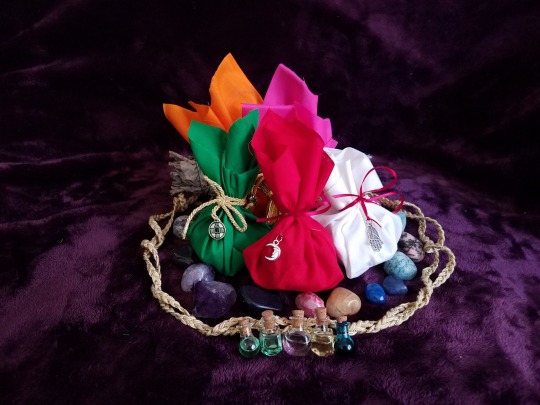
"The Magical Art of Crafting Charm Bags blends multiple cultures into a working system of magical potency. It is a useful grimoire and reference for any magical practitioner. Within its pages, you can learn to put magic in the palm of your hand." ― Adam Sartwell, co-founder of the Temple of Witchcraft and award-winning author of Twenty-One Days of Reiki and The Blessing Cord.
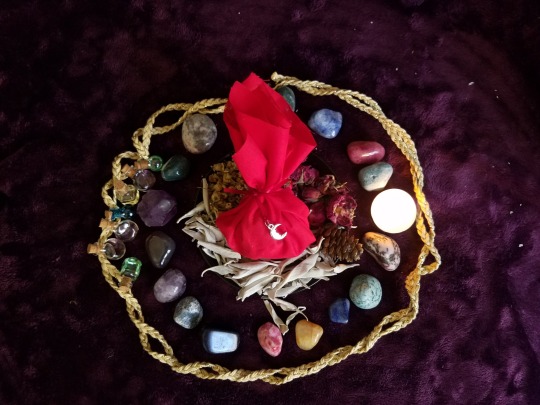
"Using a combination of methods from various traditions and cultures, Elhoim Leafar presents us nothing less than a manual on the magical arts. From magic circles and planetary correspondences, to utilizing color associations, herbs, stones, bones, and the phases of the moon, Leafar offers simple methods for the creation and consecration of charm bags for a veritable plethora of practical purposes. Easy to understand and full of interesting details, The Magical Art of Crafting Charm Bags is a great guide for the beginner, but will also provide the seasoned practitioner with new perspectives on the art of making one of the most beloved forms of spells that folk-magic has to offer." — Storm Faerywolf, author of Betwixt and Between: Exploring the Faery Tradition of Witchcraft.

"It is clear when reading The Magical Art of Crafting Charm Bags that Elhoim Leafar knows what magick is, namely 'an ancient and noble force capable of generating all kinds of effects in space and time. He unlocks the keys to this magick providing basic, yet vital, information needed to get started creating altars, talismans, and, ultimately, charm bags. If you are looking for ways to improve and expand your magick this is the book for you." — Lilith Dorsey, author of "Orishas, Goddesses, and Voodoo Queens", and "Water Magic".

"Elhoim Leafar has created a beautiful, empowering, and immensely accessible manual for crafting charm bags. Teaching simple and effective ways to make charms bags for every purpose under Moon and Sun, these portable powerhouses of magic will enhance your daily life and spiritual practice. I enjoyed using charm bags before, but after reading The Magical Art of Crafting Charm Bags, I absolutely adore them!" -Michael Butler Smith, shamanic witch and author of Embracing Isis: A Witch's Guide to the Great Goddess.

"The Magical Art of Crafting Charm Bags is well resourced with easy to follow instructions. I will keep it as a companion and I suggest you do the same. It's a must-have for all practitioners of the magickal arts. I love it." -Lady Rhea, author of The Enchanted Candle and The Enchanted Formulary.
GRAB YOUR COPY HERE: https://www.amazon.com/Magical-Art-Crafting-Charm-Bags/dp/1578636191/
#witch#witchcraft#witches#witches of tumblr#witches of color#witches of new york#magick#sorcery#sorcerer#lady rhea#charm bags#mojo bags#hex bag#spell bag#grigri#grisgris#gris gris bags#hoodoo#voodoo#santeria#folk witch#folk magic#Venezuela#candomble#yoruba#black witchcraft
1 note
·
View note